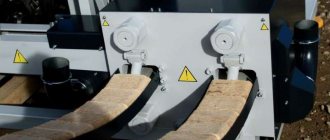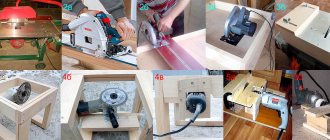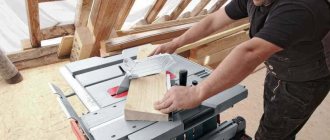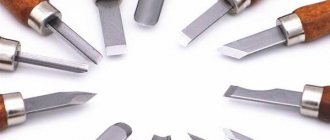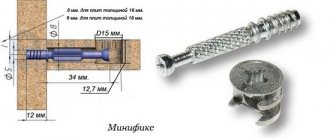In general, a jack (from the Dutch dommekracht) is a mechanism that can be used to lift and secure a load resting on it at a certain height.
A small jack (screw or hydraulic), widely used among car enthusiasts, powered by the owner’s muscular strength, is capable of raising the car to a small height, sufficient to change wheels on the road. However, it is extremely inconvenient to use it when installing or dismantling vehicle components and assemblies. A pneumatic jack is more suitable here, allowing you to raise the car to the required height. You can buy it at a car store or make it yourself.
Working principle of pneumatic lift
A pneumatic jack works using the properties of compressed air. In the sealed chamber, into which the air pumped by the compressor enters, high pressure is gradually created.
Rubber cushions that expand under the action of compressed air rest against the load and gradually raise it to a predetermined height. At the end of the work, the air is released, the pressure inside the cushions decreases and the load is smoothly lowered.
In the process of repairing a car, service station specialists and car enthusiasts use a variety of options for pneumatic lifts - from rolling pneumatic jacks to polymer inflatable cushions and home-made structures.
Types of inflatable lifts
All jacks based on a rubber cushion have a similar structure: it is a rubber structure that expands due to the flow of gas or compressed air inside. It is customary to distinguish only methods for increasing the volume of a pillow:
- using a special compressor . Air is supplied inside the pillow by an external device - a mechanical or automated pump. The advantage of this option is the absence of any unpleasant odor, because there is no need to use the exhaust pipe of the car. Also, the jack will not depend on the performance of the car. Minus - the device will show minimal efficiency with low compressor power;
- using a car exhaust system. Gas is pumped into the pillow using an ordinary exhaust pipe. The advantage of this method is the speed of downloading and the absence of the need to use additional equipment. The disadvantages include toxic gas, as well as dependence on the health of the vehicle.
Jacks are also classified according to their ability to lift a certain mass.
Classification of pneumatic jacks
Pneumatic lifts that are used in the repair of various vehicles can be divided into four types:
- portable;
- rolling;
- ditch;
- platforms.
Portable type jacks
Portable pneumatic jacks are a rubber or polymer cylinder with strong elastic walls. To lift the vehicle, this cylinder is filled with air, which is pumped by a compressor, or exhaust gas from the vehicle's exhaust pipe.
Despite the fact that this design looks quite flimsy, it is able to provide a lifting force of about 3...4 tons. At the same time, the time it takes to lift the car does not exceed 2...3 minutes.
In addition, portable pneumatic jacks:
- do not require maintenance, since they have no wearing parts;
- can be used even in cases where there is no flat hard surface under the car.
Rolling tackles
A rolling-type pneumatic jack is a trolley on wheels equipped with an elastic air cushion and locking elements that ensure the immobility of the structure after installing it under the car.
Air spring jacks provide lifting of the car to a height of up to 50 cm.
To hang a vehicle, a rolling jack is installed under its bottom, after which it is connected to a high-pressure compressor. Using a compressor that forces air into the air spring allows the jack to raise the car to the required height in a few seconds.
Ditch
A ditch pneumatic lift (crossbeam) is necessary in cases where it is necessary to adjust the wheel alignment angles or perform other types of repair work for which one of the vehicle axles needs to be suspended.
Its use allows you to create additional space in the repair area, which makes the repair more comfortable. In addition, the traverse can move along the axis of the inspection hole, so it can be placed in any place convenient for the car mechanic. Mount the traverse on an inspection hole or post lift. On the market you can find models with a lifting force exceeding 4 tons.
Structurally, the ditch lift is a frame with a lifting beam and a powerful air spring. At the same time, the locking mechanism makes it easy to fix the lifting beam at the required height.
For frame cars, the design provides quick-release extensions with replaceable rubberized heels. When lifting the car, the entire load is transferred to the frame. This jack is equipped with a reinforced three-section air spring with special reinforcing belts in rubber casting.
Pneumatic platforms
The pneumatic platform is designed to quickly lift a wheeled vehicle to a height convenient for high-quality tire mounting.
Using such a platform, you can hang the entire chassis of the car and service all 4 wheels at the same time.
At the same time, in addition to tire fitting work, other types of minor repairs can be carried out, such as, for example, replacement:
- ball joints;
- steering tips;
- brake pads, etc.
Using a pneumatic platform, you can lift the car to a height of about 400...500 mm. In this case, the device is equipped with a special safety stopper, the lever of which must be set to the load securing position upon completion of lifting.
Operating principle, design and equipment of the cushion jack
This car lift works by increasing the internal volume of a special rubber cushion. It is filled with air or gas using a car exhaust pipe or a compressor.
Device contents:
- the rubber cushion itself;
- a hose required to connect a source of air or gas to the device;
- a pair of mats that protect the pillow from moving or tearing;
- adapter designed for connection to the compressor;
- a case for transporting and storing equipment.
An air jack can be used to lift vehicles in a variety of cases:
- when replacing car wheels;
- for installing a chain on the wheels, which prevents slipping on icy and snowy surfaces;
- to pull a car out of a rut;
- when crossing sandy terrain;
- to pull the vehicle out of snow or ice when it is slipping.
Inflatable jacks are also often used in construction, when joining pipes, rescue and installation activities. Its design makes it possible to lift different loads. The pad is very versatile - it can be used on uneven, sandy, and marshy surfaces .
The inflatable type of lift, in comparison with other types, can be used on uneven and soft surfaces. It can lift a car weighing up to three tons.
Specifications
A pneumatic jack has a certain set of technical characteristics.
Among them the main ones are:
- load capacity, t - no more than 4;
- load lifting height, cm - 35...75 cm;
- pick-up height, cm - no more than 15 cm;
- operating pressure, atm - from 2 to 9.
These parameters may vary slightly depending on the type and classification of a particular air jack.
Advantages and disadvantages
Among the advantages inherent to pneumatic jacks, users note:
- simplicity and ease of use
- high load capacity;
- minimum pick-up height;
- large lifting height, ensuring trouble-free repair work;
- lack of physical effort to lift the load;
- a large support area, which ensures high lifting reliability and stability of the mechanism and, in addition, does not damage the bottom of the vehicle;
The disadvantages of pneumatic jacks include:
- the possibility of damage to the elastic polymer or rubber walls of pneumatic cylinders and cushions;
- impossibility of use at low temperatures - air spring walls at ambient temperatures below -10°
- the durability of elastic materials from which cylinders and air bags are made is significantly less than that of metal parts of analogues.
Advantages of inflatable lifts
This equipment has a lot of advantages compared to ordinary, hydraulic, rack and screw jacks . These include the following:
- no need to exert physical effort to lift the load;
- a folded pillow can be placed under any element of the machine, even with a minimum distance from the bottom to the ground;
- the device can be used in absolutely all terrain conditions;
- An inflatable jack weighs no more than a couple of kilograms and is very compact when deflated.
Selection criteria when purchasing
The domestic market of equipment and accessories for car repairs offers a large number of different lifting mechanisms, among which pneumatic jacks occupy a relatively small niche.
Experts advise car enthusiasts when choosing a pneumatic jack to pay special attention to:
- the amount of carrying capacity, which must be at least 200...300 kg greater than the weight of the vehicle being lifted;
- lifting height;
- pick-up height, which should not be greater than the vehicle’s ground clearance;
- the maximum permissible pressure in air bags, based on the fact that low-pressure bags are only suitable for lifting passenger cars.
In addition, when choosing a pneumatic jack, you need to clearly understand what it is needed for. For example, if you have to take it with you on a trip, then it should be light, mobile and compact, but when using a pneumatic jack in the garage, you can purchase a more bulky, but multifunctional unit.
When choosing a pneumatic jack for your car, pay attention to the manufacturers of this type of equipment. Keep in mind that only high-quality equipment makes it possible to repair a car quickly and comfortably. After all, if the materials from which the pneumatic chambers and hoses are made are not afraid of punctures and cuts, then the pneumatic jack will serve you for a long time.
How to make a pneumatic jack with your own hands
The technical characteristics of self-made pneumatic jacks must ensure reliable hanging of at least the vehicle used by the car owner.
So, for example, if a pneumatic jack is used to lift passenger vehicles, then its load capacity can be in the range of 1.5...2 tons. If the owner of the lift drives a GAZelle-type truck, then the lifting capacity of the jack should be slightly greater - about 2.5...3 tons.
When starting to independently manufacture a pneumatic lift, it is necessary to take into account the amount of ground clearance of the car. In cases where the ground clearance is small or the car often gets stuck in the mud, the lifting height of the jack should be no more than 10 cm.
As a rule, the main element of a homemade air jack is the air suspension of any truck or bus. However, the simplest design can be made without it, using, for example, a piece of sewer pipe.
The simplest pneumatic lift
To make a simple pneumatic jack you will need:
- a small section of sewer pipe with a diameter of 110 mm;
- two plugs of the same diameter as the pipe;
- coupling with a diameter of 110 mm;
- hoses;
- 2 spool valves for tubeless car tires;
- wooden block;
- hose;
- glue;
- lithol;
- sandpaper;
- knife;
- hacksaw for metal;
- drill;
- faucet for bleeding air;
- car clamps;
- small plumbing tee.
Using simple manipulations, you can quickly assemble a simple pneumatic jack from these elements.
The sequence of actions is as follows:
- the lower part is cut off from one of the plugs, leaving approximately 20 mm from the side;
- Use sandpaper or a knife to clean the edge of the cut from burrs;
- a hole with a diameter of 10 mm is drilled in the center of the resulting part, into which a spool pre-lubricated with glue is then inserted;
- remove the rubber ring from the coupling, coat the exposed surface with glue and put the ring in place;
- in the same way, coat the edges of the plug with the spool with glue and glue it into the coupling;
- from a piece of pipe with a diameter of 110 mm, use a hacksaw to cut off a part 10 cm long and then cut this part lengthwise;
- insert the pipe cut lengthwise into the coupling, mark and cut off another piece from it so that it lies flat in the coupling;
- glue the resulting part into the coupling;
- glue another piece of pipe 5 cm long on top;
- put a hose on the spool and tighten it with a clamp;
- a groove is cut out in a wooden block for a spool with a hose and then the previously made part is glued to the board;
- insert a water tee into the hose, put another piece of hose with a tap on one of its branches to bleed air from the jack;
- cut off its wide part from the second spool;
- Put a small piece of hose on the free end of the water tee, insert the cut spool into it and tighten the hose with a clamp. This is where the air from the compressor will be supplied;
- lubricate the inner surface of the coupling with lithol and insert the previously manufactured piston into it;
- On top of the piston you can glue a circle cut from sheet rubber or plywood.
- By installing the resulting pneumatic jack under the car and supplying air from the compressor under low pressure, you can raise the car to a height that will be sufficient, for example, to change a wheel.
Pneumatic rolling jack
You can also make a pneumatic jack of a more advanced design with your own hands. To do this, you need to get a durable rubberized pillow. For example, a used air spring from a truck or bus will do. When starting to manufacture a pneumatic rolling jack, you must clearly understand its design
In addition to an old car cushion suitable in size and load-carrying capacity, for the manufacture of a rolling-type pneumatic jack you will need:
- a hose equipped with ball valves for supplying and bleeding air;
- a metal frame on wheels, which will take up part of the ground clearance under the car and provide a sufficient degree of freedom to the air supply hose.
By combining all the above elements in a certain sequence, we get a simple rolling jack. One of its design options can be seen in the photo:
Do not forget that the jack should not damage the parts and paintwork of the car during operation. To do this, its supporting surface is additionally covered with a rubber or plywood sheet.
Air injection mechanism
Of no small importance when operating a homemade jack is the mechanism by which air is supplied into the air spring from the truck. A garage compressor, operating from a centralized power supply network with a voltage of ~220 volts and providing a pressure of 6 atmospheres or more, copes well with this role. Using such a compressor, you can hang a car to a height of up to 0.5 m in a few seconds.
They also use a compressor, powered by the vehicle’s on-board network, which provides air supply under pressure of at least 2 atmospheres, but this option is only suitable in conditions where it is not possible to lift the car otherwise.
Video instruction: how to make a pneumatic jack from a truck cushion
It is worth noting that suspension cushions for high-tonnage vehicles can be bought cheaply at any TIR vehicle fleet or even received for free. This is not dismantling, they are simply written off and thrown away. The main thing is to carefully look at the integrity so that it does not burst at the most inopportune moment.
Features of operation
Until fully expanded, the pillow looks like a flat rubber bag. To use the device, you must do the following.
- Place the jack under the car and level it.
- Place special mats on the bottom and top of the device that come with the device.
- Shut off the connection between the valve and the hose - this is necessary to prevent air masses from escaping back out of the pillow.
- Connect the hose to the air or gas supply device - exhaust pipe or compressor.
- You can inflate the pillow using an exhaust pipe or a special generator.
- Control the volume of the jack . If you notice uneven pumping, you should immediately stop the gas or air supply.
- After the pillow is fully inflated, the hose will automatically be removed from the exhaust pipe, and the valve will hold the air inside the structure.
These jacks are especially popular among SUV owners who regularly drive over rough terrain. This lift is useful in many situations.
When installing the cushion, you must carefully ensure that there are no sharp or hot objects near the structure, otherwise it may puncture or melt. Carpets provide protection only from below and from above - when air is pumped into the pillow, its walls, as a rule, expand and often touch the car.
It is also undesirable to use an inflatable jack at sub-zero temperatures, because in this case the container may lose its tightness.
Security measures
When working with a pneumatic jack, you must strictly comply with the safety requirements specified in the operating instructions. It must be remembered that the jack is not a safety device and is intended only for lifting the car.
In this regard, it is imperative to record:
- car wheels using wheel chocks, which will prevent spontaneous movement of the vehicle during repairs;
- the car body at the required height, using safety stops for this.
In addition, you need to check and make sure that the vehicle's wheels are braked by the parking brake system.
Do not exceed the lifting capacity of the jack. In cases where the air jack is equipped with a safety valve set by the manufacturer to prevent excess load, it is prohibited to change the factory settings.

